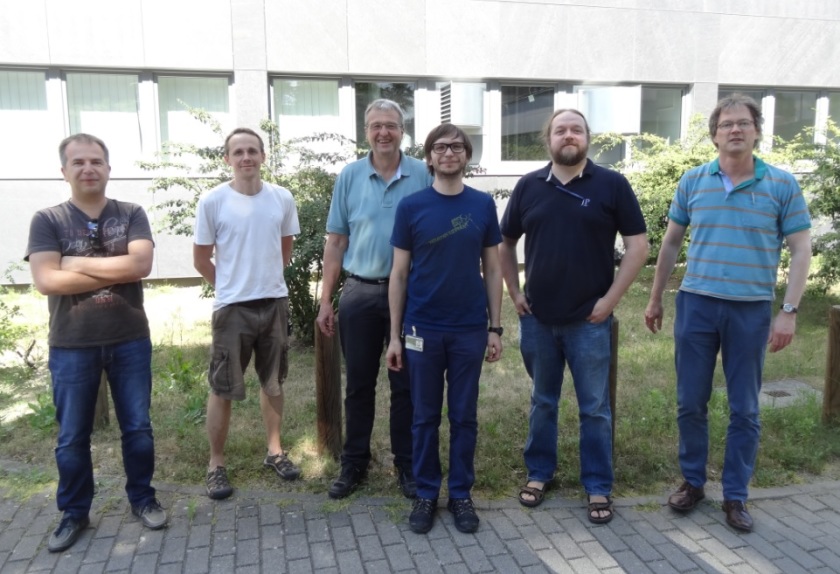Kickoff for Joint Lab with IFW Dresden

Kickoff with a meeting on 19 June 2017: Prof. Borisenko, Dr. Rienks, Prof. Büchner (all IFW), the leader of the Young Investigator Group Dr. Fedorov; Dr. Varykhalov and apl. Prof. Rader (both HZB) (from left to right). © HZB
The Leibniz Institute for Solid State and Materials Research Dresden (IFW) and Helmholtz-Zentrum Berlin (HZB) have created a Joint Lab for “functional quantum materials” and under its umbrella a Young Investigator Group.
The Joint Lab "Functional Quantum Materials" will take advantage of the long-standing expertise of both institutes in energy and materials research and the growth of epitaxial films.
The new lab is dedicated to explore new materials with promising quantum properties for future applications, for instance in information technologies. The scientists will further develop the common instrumentation at BESSY II with its unique properties - part of them without rival in the world.
With the joint lab, IFW Dresden and HZB intensify their collaboration in research and the promotion of young scientists. Dr. Alexander Fedorov, aged 29, is an internationally renowned young scientist who will move from Cologne to Berlin to head the Young Investigator Group.
O. Rader
https://www.helmholtz-berlin.de/pubbin/news_seite?nid=14688;sprache=en
- Copy link
-
The twisted nanotubes that tell a story
In collaboration with scientists in Germany, EPFL researchers have demonstrated that the spiral geometry of tiny, twisted magnetic tubes can be leveraged to transmit data based on quasiparticles called magnons, rather than electrons.
-
Ernst Eckhard Koch Prize and Innovation Award on Synchrotron Radiation 2025
At the 27th BESSY@HZB User Meeting, the Friends of HZB honoured the dissertation of Dr Enggar Pramanto Wibowo (Friedrich-Alexander University Erlangen-Nuremberg). The Innovation Award on Synchrotron Radiation 2025 went to Prof. Tim Salditt (Georg-August-University Göttingen) and Professors Danny D. Jonigk and Maximilian Ackermann (both, University Hospital of RWTH Aachen University).
-
Bright prospects for tin perovskite solar cells
Perovskite solar cells are widely regarded as the next generation photovoltaic technology. However, they are not yet stable enough in the long term for widespread commercial use. One reason for this is migrating ions, which cause degradation of the semiconducting material over time. A team from HZB and the University of Potsdam has now investigated the ion density in four different, widely used perovskite compounds and discovered significant differences. Tin perovskite semiconductors produced with an alternative solvent had a particular low ion density — only one tenth that of lead perovskite semiconductors. This suggests that tin-based perovskites could be used to make solar cells that are not only really environmentally friendly but also very stable.
